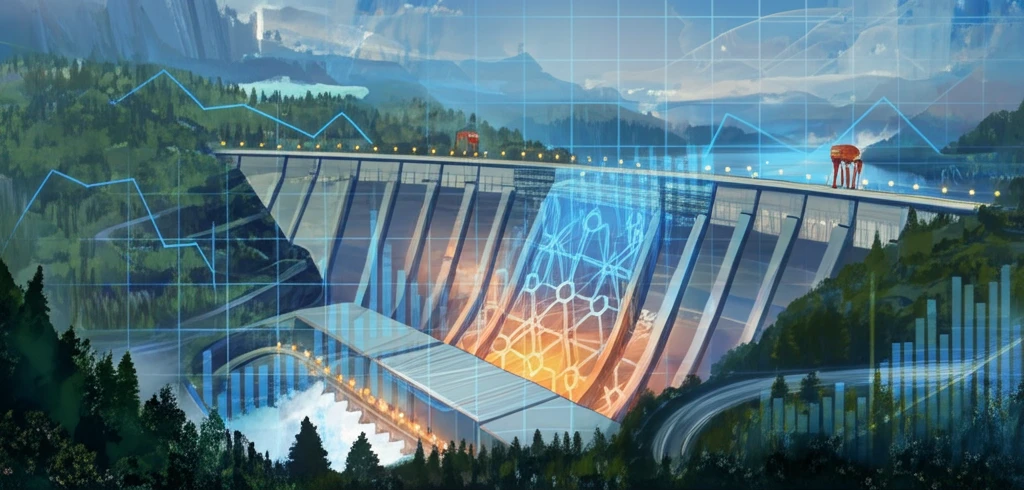
Powering Tomorrow: Unveiling the Dynamics of Hydropower Economics
"A comprehensive look into the evolving landscape of hydropower, from its historical roots in Norway to its pivotal role in the global energy transition."
Hydropower, for many years, has been more than just an energy source; it's been a cornerstone of political and economic strategy, especially in countries like Norway. Historically, Norway's approach to hydropower was characterized by direct political control, especially after 1905 when the parliament restricted foreign and domestic private ownership of waterfalls essential for hydropower development. This led to a system where the public sector dominated electricity production, owning almost 90% of the nation's hydropower capacity. This model, deeply rooted in the nation's history, has significantly shaped its energy landscape.
At the local level, electricity pricing policies focused on average cost pricing for general consumption. Meanwhile, state-owned power stations supplied energy-intensive industries such as aluminum, ferro alloys, and pulp and paper at favorable rates. Greenhouse activities also benefited from this protective agricultural policy. The availability of cheap electricity became a key factor in localizing primary aluminum industries, given the need to import raw materials like aluminum oxide. Although the technology was partly developed in Norway, it soon became international. This strategic approach ensured stable energy prices and supported key sectors of the Norwegian economy.
However, the global energy landscape began to shift in the late 1980s and early 1990s with the deregulation of the electricity industry. The creation of wholesale markets, such as the day-ahead last price auction in England in 1990, initiated a wave of similar deregulation efforts across Europe. This transition wasn't solely about policy; it reflected an underlying economic rationale focused on driving down production costs through competition. As countries worldwide grappled with these changes, Norway, too, found itself at a crossroads, balancing its historical energy policies with the emerging dynamics of a globalized energy market.
Navigating the Currents: Key Aspects of Hydropower Today

The deregulation of electricity markets introduced competition and aimed to lower production costs. Norway followed suit, establishing a competitive wholesale market in 1991. However, unlike England, which relied on conventional coal-based thermal units and nuclear plants, Norway depended on over 600 hydropower plants. The operation and management of these plants traditionally fell to engineers. The national grid and electricity regulator (NVE) employed system analysis to coordinate the reservoirs, ensuring demand was met cost-effectively while also monitoring energy balance and planning capacity expansion. It's a complex interplay of natural resources, engineering expertise, and regulatory oversight.
- Price Variability: Consumer prices now fluctuate based on cold winters and dry years.
- Investment Lag: New capacity investments have been slow, reflecting previous over-investment.
- Market Expansion: Existing capacity is efficiently utilized through market mechanisms.
Looking Ahead: Balancing Sustainability and Economics
Hydropower's journey from a politically directed enterprise to a market-driven sector reflects the broader global energy transition. As nations grapple with climate change and seek sustainable energy solutions, hydropower remains a vital component. Understanding its economic dynamics, environmental impacts, and technological advancements is crucial for policymakers, industry leaders, and consumers alike. The future of hydropower depends on striking a balance between economic efficiency, environmental stewardship, and social responsibility, ensuring a reliable and sustainable energy supply for generations to come. The insights gained from Norway's experience offer valuable lessons for countries worldwide as they navigate their own energy futures.
